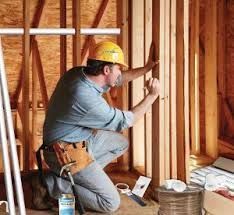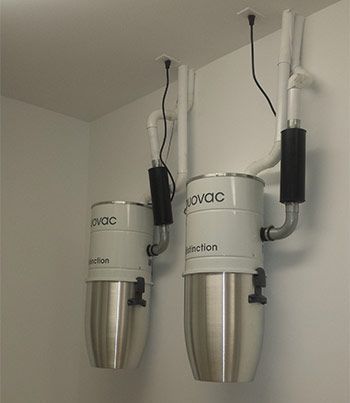Central Vacuum System Installation – A Quick Guide
Table of Contents
- Central Vacuum System Installation – A Quick Guide
- Planning the Installation of a Central Vacuum System
- Cutting and Gluing PVC Central Vacuum Pipes
- Installing the Power Unit
- Installing the Central Vacuum in a New Construction
- Installing the Central Vacuum in an Existing Construction
- Resources and References:
Central Vacuum System Installation – A Quick Guide
If you want to install a central vacuum system, you need to plan well. Here are three quick steps:

- Start by choosing and placing the power unit in a place away from the main living areas, such as the garage, basement, or utility room.
- Install the inlet valves in strategic positions throughout the home in receptacles on the walls.
- Run plastic pipes through the walls from the power unit to the inlet valves. These pipes conduct the dirt to the power unit.
It is easiest to install central vacuum systems in new constructions, mainly due to the installation of the tubing. If you’re exceptionally good with tools, you can do it yourself, but it is best to hire a plumber or vacuum systems expert.
Planning the Installation of a Central Vacuum System
The first thing you should do is to plan where the vacuum outlets will go for the convenience of use. More inlets mean higher installation cost and increased vulnerability of the system to suffer leaks and decrease the suction.
Cutting and Gluing PVC Central Vacuum Pipes
Central vacuum systems utilize a network of pipes to carry dust and debris from the vacuum cleaner to the power unit and canister that collects it. Measuring the PVC pipe is easy, as is cutting and assembling them. The hard part is cutting and drilling holes through wall studs and other framing material. To achieve this:
- Cut the PVC pipe to the desired lengths with a reciprocating saw with a fine-toothed blade or a hacksaw.
- Smooth out the rough-cut edges of the pipe inside out with a sandpaper.
- Apply a band of PVC cement with a 1-inch width around the end of the pipe.
- Immediately push the fitting into the PVC pipe and rotate it slightly, and hold onto the joint for half a minute.
Installing the Power Unit
You should start by mounting the power unit onto a wall. Use 2.5-inch long screws to mount the plate into wall studs tightly. Hang the vacuum canister on the appropriate bracket and mark where the exhaust line meets the wall. Cut through to the outside and attach it to its exterior wall cap and exhaust vent.
Installing the Central Vacuum in a New Construction
- Use a wall mounting bracket to take measurements for the location where the hole for the riser pipe should go.
- Before screwing the bracket to the stud, assemble it and the elbow. Then glue a pipe to the elbow so that it serves as the rise.
- Cover the opening of the pipe so that it doesn’t take in debris from the construction.
- Glue the riser, beneath the floor, to a T as well as the horizontal pipe run. Lay low voltage wires from all the outlets and connect them to one that goes back to the power unit. Secure the cables to the pipes using black electrical tape. Strip the wire ends and twist them before securing the wire connections with wire nuts.
Installing the Central Vacuum in an Existing Construction
Installing a central vacuum in an older home is trickier. The best place to start is with the selection of locations where the inlet valves will go.
- Mark the points where you want the inlet valves to go on the exterior walls, at the same height as the electrical outlets. Each inlet should be at most 6 feet of an electrical receptacle.
- Use a wallboard saw, or a keyhole saw to cut the inlet hole.
- Drill a hole of a 1/8 of an inch through the floor right below each inlet hole where the base molding or shoe will cover the hole. After boring the hole, push wire to make it easy to find the hole when you approach from underneath the floor.
- Now go under the floor and measure the location of the tubing that's supposed to pass through the center of the wall. Through the floor and bottom plate of the wall, cut a 2-inch wall using a hole saw and pry out the wood chunks using a chisel. Wear protective glasses throughout the process.
- Run the appropriate length of the tubing through the hole and into the inside of the wall to the inlet hole. Go back into the room above and cement a right-angled elbow and slot the mounting onto the elbow through the hole.
- Repeat the process for all other locations.
- Run low voltage wires from the power unit to all inlet valves.




Log In
Create New Account